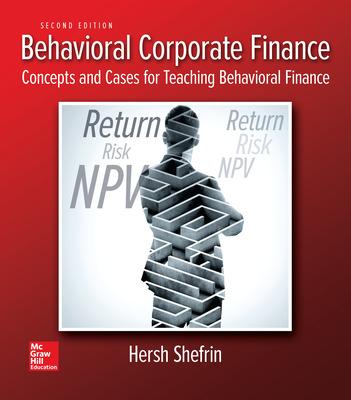What are the main issues that the traditional approach emphasizes in respect to Apples dividend policy? What
Question:
- What are the main issues that the traditional approach emphasizes in respect to Apple’s dividend policy?
- What are the main issues that the behavioral approach emphasizes in respect to Apple’s dividend policy?
- Drawing on the discussion in Chapters 5 and 7, as well as this chapter, analyze Apple’s policy in respect to debt, repurchasing shares, and splitting its stock.
- In January 2004, a multifactor regression analysis of Apple’s stock return, based on five years of past monthly returns, indicated that only the excess return on the market was statistically significant. Factor loadings related to size, book-to-market equity, and momentum were not statistically significant. At the time, the regression coefficient for the excess return on the market was 1.26. In February 2014, the same multifactor regression produced similar results, except that the regression coefficient for the excess return on the mar- ket had fallen to 1.0. Exhibit 8-3 summarizes the regression results. How do these findings relate to the information provided in the minicase?
- Discuss whether there are any behavioral issues in the minicase that have not arisen in connection with any of the preceding questions.
Steve Jobs, the visionary founder and CEO of Apple, died in October 2011. Under Jobs’s leadership, Apple had in- troduced major innovative products such as the iPod in 2001, the iPhone in 2007, and the iPad in 2010. These innovations propelled Apple from nearly failing to having the highest market capitalization among U.S. firms. Tim Cook, who had headed Apple’s operations, succeeded Jobs as CEO. Two-and-a-half years after Cook had be- come CEO, Apple’s annual revenue had grown by about 58 percent, and its profits had grown by about 40 percent.
At the time, Apple’s CFO was Peter Oppenheimer, who in 2012 oversaw Apple’s first dividend payments in over a decade, as well as a more aggressive share-repurchase program. Notably, Apple limited both of those programs because it held almost 80 percent of its cash overseas for tax reasons. The company paid a quarterly dividend of $2.65 a share ($10.60 annualized), amounting to $10 billion in cash per year. At the time, Apple indicated it would periodically discuss updating its dividend but did not specify a timeframe. Its board of directors also authorized a $10 billion share repurchase program, to begin in 2013.
In February 2013, hedge fund manager David Einhorn of Greenlight Capital, which held Apple stock, appeared on CNBC and Bloomberg proposing that the company issue preferred shares with a 4-percent dividend yield.26 Apple responded with a press release, noting that its board had been having active discussions about returning additional cash to shareholders.
Security analyst Bill Choi from Janney Capital Markets wrote to say that although Apple might be considering is- suing preferred shares, he thought it more likely that Apple would simply increase the dividend payout ratio on its existing shares. He also stated that he thought that Apple’s financial condition would support a 4 percent dividend, which would likely expand the firm’s shareholder base.
In April 2013, Apple issued $17 billion in bonds, at the time the largest corporate bond offering on record.27 It did so to return more capital to shareholders without having to incur repatriation taxes on its overseas holdings of cash. In September 2012 Apple shares peaked above $700.
From then through the end of February 2014, the stock returned −16.5 percent while the S&P 500 returned 33.1 percent. Analysts covering Apple were disappointed and the percentage of those issuing buy recommendations fell from 94 percent to 69 percent. Its 30 top shareholders reduced their Apple holdings from 36 percent to 30 percent during this period, down from a peak of 40 percent in 2009. According to Morgan Stanley, this kind of reduction was anomalous for large-cap tech stocks.
In March 2014, sentiment about Apple was on the low side. Investors were questioning the firm’s growth potential, especially after it reported its first annual decline in earnings in over a decade, largely because iPhone sales...
A dividend is a distribution of a portion of company’s earnings, decided and managed by the company’s board of directors, and paid to the shareholders. Dividends are given on the shares. It is a token reward paid to the shareholders for their...
Step by Step Answer:

Behavioral Corporate Finance Concepts And Cases For Teaching Behavioral Finance
ISBN: 9781259277207
2nd Edition
Authors: Hersh Shefrin





